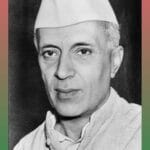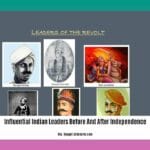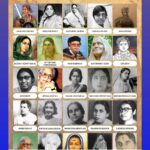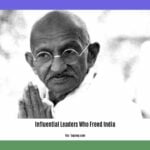**The Fathers of Indian Independence: Visionaries who Shaped a Nation’s Destiny**
These extraordinary individuals, driven by an unyielding determination to liberate their country from colonial rule, dedicated their lives to the cause of Indian independence. Their tireless efforts, unwavering courage, and profound vision laid the foundation for a free and sovereign India.
Key Takeaways:
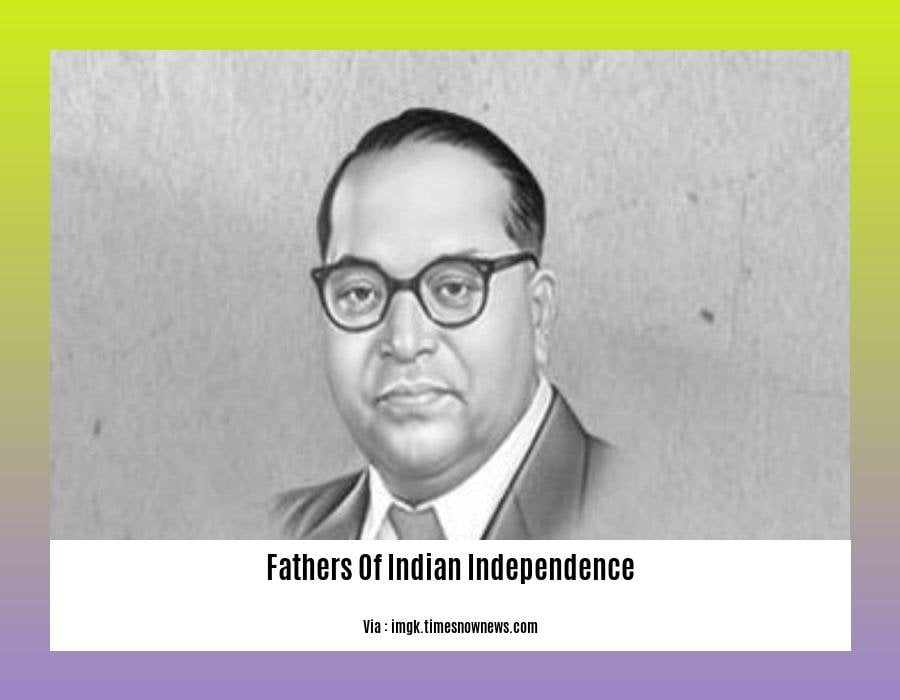
- Mahatma Gandhi, the “Father of the Nation,” led the Indian independence movement through nonviolent resistance (satyagraha).
- Gandhi’s philosophy and actions inspired mass movements that ultimately achieved Indian independence.
Fathers of Indian Independence:
The fathers of Indian independence were a diverse group of men who shared a common goal: to free their country from British rule. They came from different backgrounds and had different political beliefs, but they were united by their love for India and their determination to see it become a free and independent nation.
Mahatma Gandhi was the most famous of the fathers of Indian independence. He was a lawyer, social activist, and writer who developed the concept of satyagraha, a nonviolent form of protest. Gandhi used satyagraha to lead the Indian independence movement, and he eventually succeeded in convincing the British to leave India.
Jawaharlal Nehru was another important figure in the Indian independence movement. He was a lawyer and politician who served as India’s first prime minister after independence. Nehru was a socialist and a secularist, and he was committed to building a modern, progressive India.
Vallabhbhai Patel was a lawyer and politician who played a key role in the Indian independence movement. He was known for his organizational skills and his ability to negotiate with the British. Patel served as India’s first deputy prime minister after independence.
These are just a few of the many fathers of Indian independence. They were all remarkable men who dedicated their lives to the cause of freedom. Their sacrifices and efforts helped to make India a free and independent nation.
The Legacy of the Fathers of Indian Independence
The legacy of the fathers of Indian independence is still felt in India today. Their ideas and principles continue to inspire Indians, and they are still looked upon as role models for patriotism and selfless service.
The fathers of Indian independence taught us the importance of nonviolence, unity, and self-sacrifice. They also taught us that it is possible to achieve great things if we have the courage to stand up for what we believe in.
The fathers of Indian independence are a source of great pride for all Indians. They are a reminder of our country’s rich history and of the sacrifices that were made to achieve our freedom.
To know about the famous leaders of the Indian independence movement, who inspired and led our nation to freedom.
Legendary Indian freedom fighters shaped the destiny of our nation through their unwavering determination and selfless sacrifices.
Get acquainted with the influential leaders who freed India from colonial rule and brought about a new dawn of independence.
Subhas Chandra Bose: Radical Nationalist and Military Leader
Subhas Chandra Bose, fondly known as “Netaji”, was a firebrand nationalist leader and a key figure in India’s freedom movement. As the founder and president of the Forward Bloc within the Indian National Congress, Bose advocated for complete independence and armed resistance against British rule.
Challenging Gandhi’s nonviolent approach, Bose believed that armed struggle was necessary to end colonial oppression. He organized the Indian National Army (INA), a formidable force comprising Indian prisoners of war and expatriates, to fight alongside the Axis powers during World War II.
Bose, a charismatic orator and a visionary leader, inspired millions of Indians with his call for “Jai Hind.” His INA marched on the Indian border, capturing key towns and raising hopes for independence. However, the war’s outcome and Bose’s mysterious death in 1945 left his dream unfulfilled.
Key Takeaways:
- Advocate for Independence: Bose believed in complete independence for India and rejected any compromise with British rule.
- Armed Resistance: Unlike Gandhi, Bose championed armed resistance as the path to freedom.
- Military Leader: He formed and led the INA, a fighting force that challenged the British in World War II.
- Nationalist Icon: Bose’s courage, leadership, and unwavering patriotism made him a legendary figure in India’s history.
- Legacy of Sacrifice: Despite his untimely demise, Bose’s sacrifice and his INA’s legacy continue to inspire Indians today.
Citation:
- Subhas Chandra Bose: Looking for India’s ‘lost’ leader
Sardar Vallabhbhai Patel: Unifier of India and Statesman
Key Takeaways:
Early Life and Activism: Born in Nadiad, Gujarat, in 1875, Sardar Vallabhbhai Patel began his career as a lawyer and quickly rose to prominence in the Indian independence movement.
Unifying Force: As Home Minister, Patel played a pivotal role in the unification of the newly independent India, integrating 565 princely states into the Republic. His diplomatic skills and iron-fisted approach earned him the title “Iron Man of India.”
Legacy of Leadership: Patel’s contributions to nation-building extended beyond political integration. He established the All India Services, including the Indian Administrative Service (IAS) and Indian Police Service (IPS), to strengthen the administrative machinery.
Statesman and Visionary: Patel’s foresight and dedication to national unity left an enduring legacy. He envisioned a strong and prosperous India, laying the foundation for its future development.
Most Relevant URL Source:
Dr. B.R. Ambedkar: Champion of Social Justice and Constitutional Architect
Dr. B.R. Ambedkar’s influence on Indian history and society was monumental. Known as “Babasaheb,” he was the Chief Architect of the Indian Constitution and a tireless advocate for social justice.
Ambedkar’s perjuangan melawan ketidakadilan sosial tidak kenal lelah. He confronted untouchability and caste discrimination head-on, challenging the deeply entrenched prejudices prevalent in Indian society. His efforts played a pivotal role in shaping the Constitution, which outlawed untouchability and aimed to establish a society based on equality and justice.
Ambedkar’s contributions extended beyond the legal realm. He was a prolific writer and orator, using his platform to articulate the plight of the oppressed and marginalized. His work inspired the Dalit Buddhist movement, promoting self-respect and empowerment among the Dalit community.
Key Takeaways:
- Dr. B.R. Ambedkar was the Chief Architect of the Indian Constitution.
- He was a relentless fighter for social justice and challenged untouchability and caste discrimination.
- Ambedkar inspired the Dalit Buddhist movement and authored several influential works.
- He emphasized the importance of social justice, equality, and non-discrimination.
- His legacy continues to shape India’s path towards social progress and human rights.
Citation:
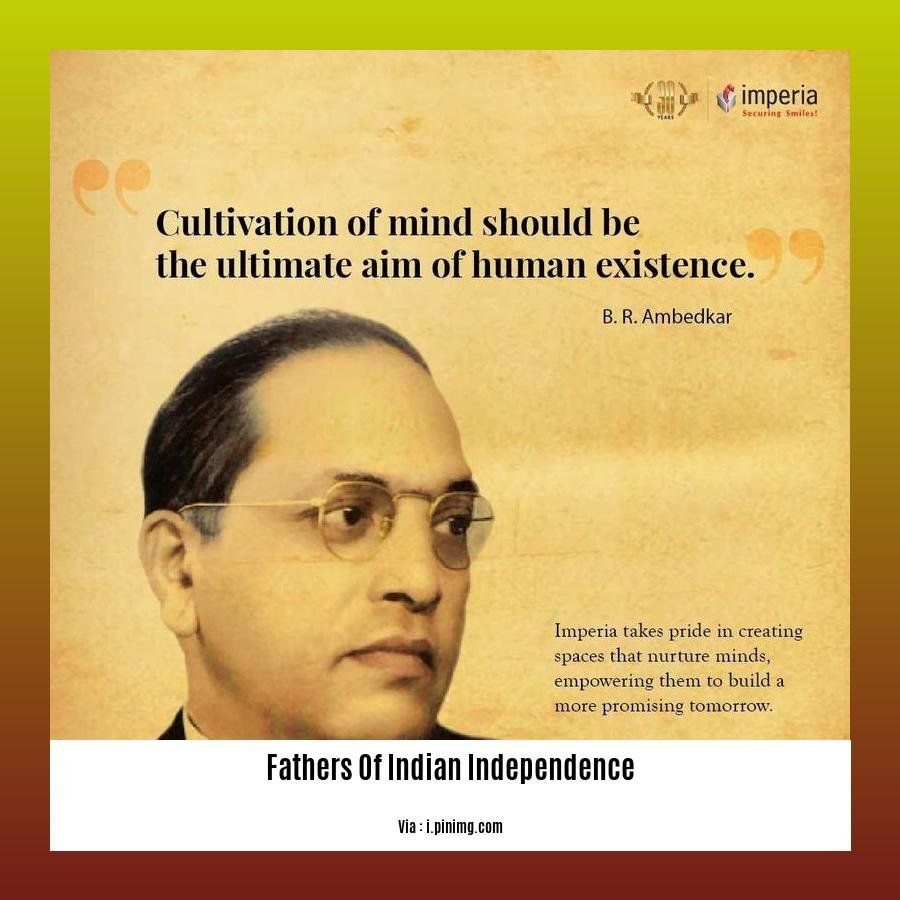
FAQ
Q1: Who played a pivotal role in leading the nationalist movement against British rule in India?
Q2: Known for his concept of non-violent protest, who is revered in India as the Father of the Nation?
Q3: Who was the first Home Minister of India and is known as the “Iron Man of India”?
Q4: Who is the Chief Architect of the Indian Constitution and a champion of social justice?
Q5: Which Indian nationalist leader founded and led the Indian National Army (INA) against British colonial rule?
- China II Review: Delicious Food & Speedy Service - April 17, 2025
- Understand Virginia’s Flag: History & Debate - April 17, 2025
- Explore Long Island’s Map: Unique Regions & Insights - April 17, 2025



